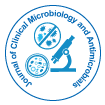

Princess Alexandra B. Duque-David
Measles is a highly contagious disease that often leads to substantial morbidity among pediatric patients especially when not addressed properly. While vaccination has already been implemented in the country, there is still a resurgence of measles outbreak. The study aims to describe the demographic and clinical profile of pediatric patients diagnosed with measles during the recent measles outbreak in a tertiary hospital in Central Luzon, Philippines; and to investigate the relationship of nutrition and measles immunization status with the outcomes of measles infection A ross sectional analytic study, conducted in Tertiary training government hospital situated in Pampanga. Patients included in the study were less than 19 years old, admitted between January to April 2019, and manifested the following criteria for suspected measles: fever, generalized maculopapular rash, cough, coryza, conjunctivitis. A total of 373 patients were included in this study, 60% (224) were males and 40% (149) were females. Majority were under 0-6 months, 40% (149). Most cases came from Pampanga, 333 (89.2%). Three Hundred fifty five (95%) were classified as clinically compatible measles, seven (2%) were laboratory confirmed and all seven had Measles IgM antibodies, while four (1%) were epidemiologically linked cases. Most of the cases manifested the classic symptoms of measles: fever 100%, rashes 99%, cough 96%, colds 84%, conjunctivitis 55% while Koplik’s spots was seen in only 13% of cases. As to exposure, those with exposure (49%) and without exposure (51%) are almost the same. Majority of the patients (285, 76%) had no measles vaccine and the top reason for non-immunization is the issue on the patients being too young for vaccination (9 months and below). Majority had normal nutritional status (72.4%). 312 reported the occurrence of clinical complications in patients with measles. Pneumonia was seen in 75% of cases and 9.3% had diarrhea. The occurrence of diarrhea is not directly correlated (p value 0.823) with the outcome of measles while Pneumonia shows significant correlation (p-value<0.001) with outcomes of measles. Death among patients was seen on cases of with pneumonia. The occurrence of pneumonia is not significantly correlated with nutritional status (p value 0.083) while diarrhea is significantly correlated with nutritional status (p value 0.027). Two hundred forty eight patients with normal nutritional status did not develop diarrhea. Vaccination status shows significant correlation with occurrence of pneumonia (p-value 0.001). Out of the 285 non-vaccinated cases, 223 developed pneumonia. Vaccination status did not show significant correlation with occurrence of diarrhea (p-value 0.946). Nutritional status and vaccination status was not significantly correlated with measles outcome with the following p value of 0.605 and 0.120.In terms of outcome, 90% of the patients were discharged and 10% of the patients died.